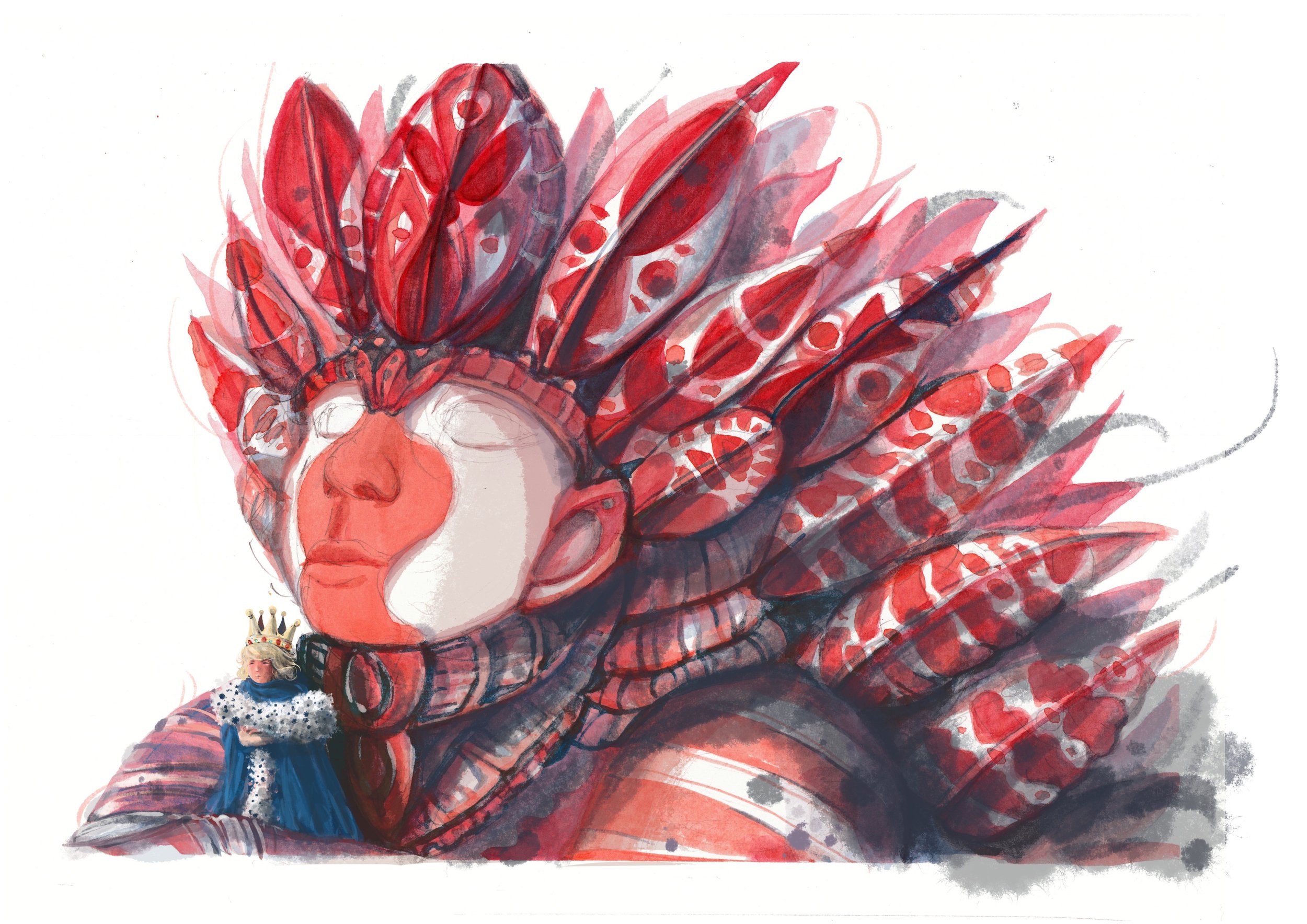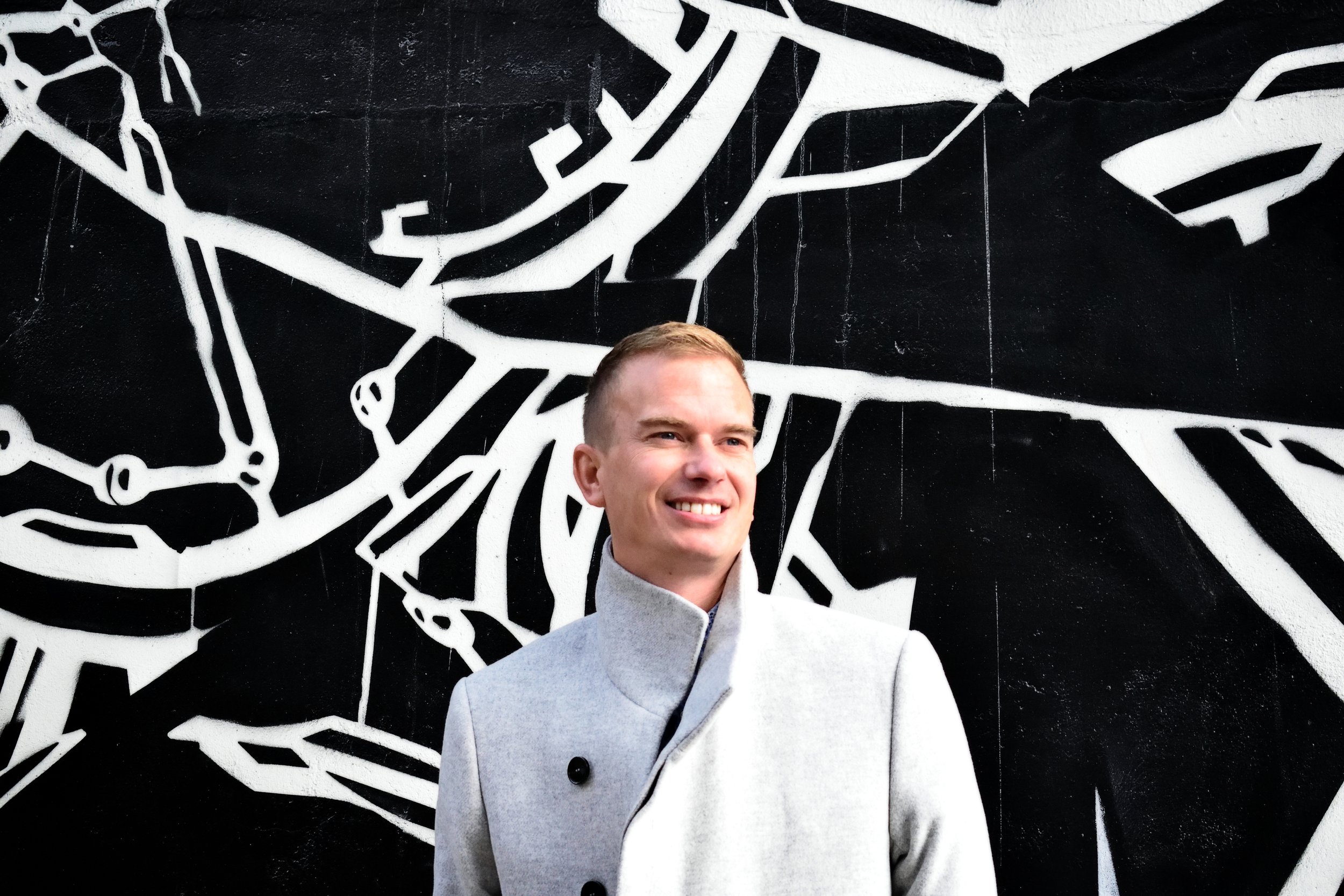Interview
Guy de Hoop
Guy lives in Breda, a vibrant city in the south of The Netherlands.
Guy is a self-taught artist. He has drawn all his life and has improved his technique over the years. Because there was a growing interest in his illustrations and paintings, Guy founded his company ‘De Hoop Creatief Advies’ 5 years ago.
In addition to selling his paintings and illustrations online, Guy also gives creative advice to entrepreneurs and various companies. As a freelance illustrator, Guy helps them visualize their vision, strategy, corporate story, and create a strong visual style. As a graphic recorder, Guy also makes visual notes at meetings and conferences.
What is your background and how did you start your journey in the art world?
“My artistic journey started at an early age. I was always drawing and sketching as a child. It runs in the family - my father and grandfather were creative too.
Yet, strangely enough, I have never seriously considered going to an art academy. I doubted if my skills were strong enough, and I also wasn't sure if I could make ends meet as an artist. My parents probably thought that was a wise decision, and encouraged me to get my bachelor degree in Social Work.
I currently work part-time as a trainer, coach and illustrator in the social domain.”
What inspires you?
“I get most of my inspiration directly from nature. As a child, I went endlessly searching for insects and arthropods in the garden. I think critters are beautiful. Even cockroaches! Maybe that explains my love for H.R. Giger's ‘Alien’.
I also have a fascination for creatures living on the bottom of the oceans. Their looks and bioluminescent abilities are so otherworldly! I love the idea that we probably haven't discovered 99% of those creatures yet.”
What themes do you pursue? Is there an underlying message in your work?
“The theme that I find most important is diversity. Whether it’s about the variety of trees in a forest or people in a society: diversity keeps a system strong, healthy and balanced.
Because of my homosexuality, I’ve felt that there was something wrong with me as a child. I thought it was hard accepting this part of myself. Especially because I grew up in a small village. People can be very judgmental.
Therefore the underlying message in my work is that real power comes from within. It comes from getting to know and accept yourself.
Our imperfections and differences makes us what we are and what we need to be.”
“I have a childlike pleasure in drawing fantasy animals, such as trolls and dragons. People who see my work often associate it with children's book illustrations. I think that's fine. My work can be a powerful eye-catcher on a wall and a powerful illustration in a picture book.”
How would you describe your work?
“My work consists of a mix of figurative and abstract elements. I work on a large scale and use many vibrant colors. In my compositions, I try to add as much 'schwung' and movement as possible.
I like contradictions in my work. I make images that are both light and dark, both male and female. I also like it when there’s something crazy in my painting — something magical or something that just isn't quite right. A small detail, an imperfection, or a crazy twist.
Last year I attended a picture book masterclass. In the coming year, I’ll continue to write and illustrate my own picture book.”
Which artists influence you most?
“It's hard to pick a few names. There are so many! From an early age, I’ve been fascinated by Brian Froud’s art. His style is so organic, graceful and imaginative, but also grim, murky and dark! Brian designed the visual style and characters for the Jim Henson 80's classic ‘The Dark Crystal’.
My peers found the film scary, but I watched the videotape almost every week as a child until the VHS cassette was totally worn out.
Over the years, I have found inspiration from a variety of artists like Moebius, Miyazaki, Kim Jung Gi, Heikala, Iraville and H.R. Giger.”
What is your creative process like?
“I don't have a set process. The more I try to 'create something', the less it comes out of my brushes. My most beautiful creations actually came about by themselves. Almost effortless.
I like to work wet on wet with colored inks and watercolors. I let the basis arise by chance and then I look for interesting shapes in the spotty chaos, such as interesting eyes, heads or bodies. Eventually, I bring these shapes out more and more with the help of pencil, pen or chalk.
I also work digitally. I sell my digital art on massive aluminum boards. I include these exclusive prints with a print number and certificate.”
What is an artist’s role in society and how do you see that evolving?
“A few years ago, I came across a saying of the Dutch artist Daan Roosegaarde: ‘Sharing is the new owning’. His saying defines my view on the artist’s role in society very well. Art should be shared and should be accessible for everyone.
Fortunately, art can be found on the corner of every street in our modern life. In Breda, for example, we have these impressive murals made by the project ‘Blind Wall Gallery’. The walls lift up the spirits of people and bring them together.”



Have you had any noteworthy exhibitions you'd like to share?
“I have not exhibited yet, but my illustrations have been published in several books, such as De KIM-methode and the Ode Aan Franka’s de Tanden Van de Draak.
The triptych, as shown above, has reached the final of the ‘Picture This’ illustration contest held by the publisher Lemniscaat.”









